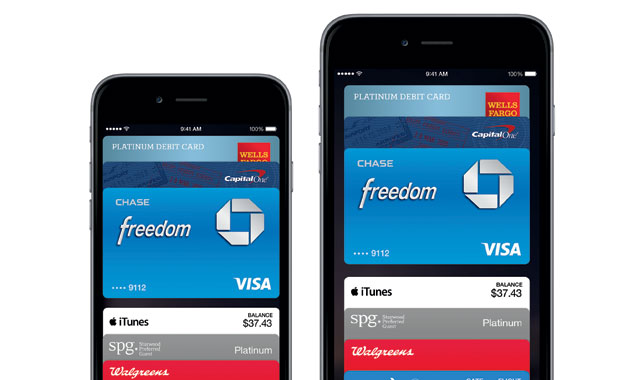
Banks in South Africa hold the key to whether mobile payment systems such as Apple Pay could be widely adopted in the country, says an expert.
Apple Pay and Google Wallet enable users to make payments directly and securely from smartphones. Both of these payment systems use the Europay, MasterCard and Visa (EMV), or chip-and-Pin, standard.
This means that an Apple Pay or Google Wallet could be simply linked to a credit or debit card, and users pay by tapping their near-field communication (NFC)-enabled phone on a point of sale terminal. With the iPhone 6, users can also authorise payments with their fingerprints.
Apple Pay was recently launched in the UK after it received a cool reception in the US. Meanwhile, Google Wallet is also slowly rolling out with a limited number of merchants. Google, though, has built the technology into its online Play Store system as well.
South Africa has adopted the international EMV standard, meaning that Apple Pay and Google Wallet could work in the country, especially with regard to processing contactless payments. But unlocking Apple Pay and Google Wallet for South African consumers requires the approval of local banks.
“There is however a big catch before Apple Pay and Android Pay will work in South Africa. The customer’s bank that issued their card must give permission to Apple and Google to allow their cards to be loaded to the Apple Pay or Android Pay application,” said Craig Kilfoil, MD of ExactConsult.
“In summary, if the big five banks don’t want Apple Pay or Android Pay to work in South Africa then it simply won’t happen because the big five banks control the merchant card acceptance infrastructure and completely dominate card issuance in South Africa and as much as Apple and Google might make the mobile payment technology available, it just won’t work without the permission and co-operation of the banks,” said Kilfoil.
Even though the payment systems from Apple and Google are advertised as unique, Kilfoil argued that they may be far in common than initially thought.
“While neither obvious nor advertised by Apple and Google as such, I have concluded that Apple Pay and now Android Pay are 100% interoperable as they are both built on Visa and MasterCard chip card technology called EMV.”
In some markets, the technology is already in use, but roll-out in South Africa has been delayed because of the lack of devices that support the standard.
In the meantime, banks have marketed cards with so-called “tap and pay” technology, but it is not a huge jump to expand the functionality to appropriate smartphones.
Ultimately, the banks hold the cards in terms of the roll-out of mobile contactless payments, said Kilfoil.
“FNB, Absa, Standard Bank, Nedbank and all the others would need to allow for their cards to be loaded to the mobile phone apps in order for them to work.”
A survey has found that few companies are ready for mobile e-commerce, despite the massive handset penetration in the country.
The wiGroup Fast Company SME Mobile Readiness Survey found that 35% allowed customers to make purchases on mobile devices.
But mobile payments are likely to increase in importance as more people turn to smartphones to transact.
Globally, Juniper Research reports that mobile e-commerce sales amounted to US$1,5 trillion in 2013, and is projected to reach over $3,2 trillion by 2017.
Kilfoil said the key for retailers was to balance convenience, cost and risk to encourage consumers to adopt mobile payments.
“If convenience is a key factor and the added cost is minor with little perceived additional risk then consumers that value convenience will adopt new payment method.”
Kilfoil will be presenting his findings into the mobile payments industry at Cashless Payments Summit on 25 and 26 June at Emperors Palace Hotel in Johannesburg. — Fin24




